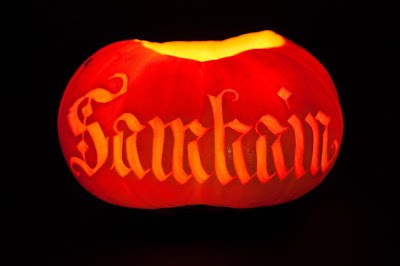Is Samhain Just a Gaelic Halloween
October 24, 2016

In short, no. Though it is often referenced as a sort of Pagan analogue, Samhain has distinct celebratory and cultural differences from Halloween. October is a month generally recognized as a formal entry to autumn; when the leaves start to turn colors, pumpkins patches open to the public, and Halloween costumes are prepared with care. Halloween parties overtake the end of the month and serve as celebrations for all things spooky, scary, and fun. But did you know that another significant holiday occurs on October 31?

Samhain, pronounced “sow-in”, is a Gaelic festival that marks the end of the harvest season. It also represents the beginning of winter. Samhain is not commonly known or celebrated in the United States, as it was historically observed through Ireland, Scotland, and the Isle of Man. Traditionally, it was a time to gather food supplies and take stock of the herds in preparation for the “darker half” of the year.
Samhain is one of four Gaelic seasonanal festivals along with Imbolc (February), Beltane (May), and Lughnasadh (August). Celtic neopagans and Wiccans have observed Samhain as a religious holiday since the late 20th century, though Samhain was celebrated for centuries prior. All Saints’ Day, a Christian holiday to honor saints, and All Souls’ Day, another Christian holiday honoring the deceased, merged with Samhain in the 9th century which created the modern Halloween we know today.

A large part of the Samhain tradition involves lighting bonfires, which captured various symbols and pagan meanings. Rings of stones, known as Ochtetyre, were laid around the fires to represent individuals. The next day, the stones were reviewed for any changes, and if any were disturbed, it was believed that the individual the stone represented would not live out the year. Those traditions, among many others, make Samhain a uniquely fascinating holiday that is distinctly different from Halloween, despite falling on the same day and having some ties to the holiday commonly celebrated in America on October 31.